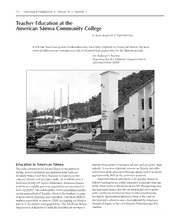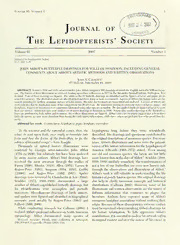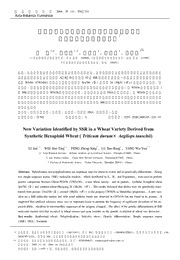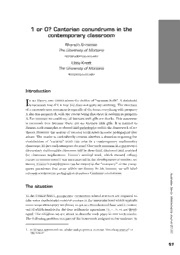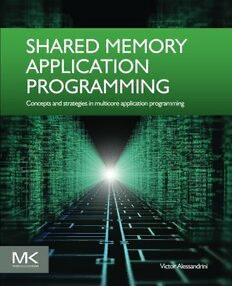
Shared memory application programming : concepts and strategies in multicore application programming PDF
Preview Shared memory application programming : concepts and strategies in multicore application programming
Shared Memory Application Programming Concepts and strategies in multicore application programming Shared Memory Application Programming Concepts and strategies in multicore application programming Victor Alessandrini AMSTERDAM (cid:129) BOSTON (cid:129) HEIDELBERG (cid:129) LONDON NEW YORK (cid:129) OXFORD (cid:129) PARIS (cid:129) SAN DIEGO SAN FRANCISCO (cid:129) SINGAPORE (cid:129) SYDNEY (cid:129) TOKYO Morgan Kaufmann is an imprint of Elsevier MorganKaufmannisanimprintofElsevier 225WymanStreet,Waltham,MA02451,USA Copyright©2016ElsevierInc.Allrightsreserved. Nopartofthispublicationmaybereproducedortransmittedinanyformorbyanymeans,electronicor mechanical,includingphotocopying,recording,oranyinformationstorageandretrievalsystem,without permissioninwritingfromthepublisher.Detailsonhowtoseekpermission,furtherinformationaboutthe Publisher’spermissionspoliciesandourarrangementswithorganizationssuchastheCopyrightClearanceCenter andtheCopyrightLicensingAgency,canbefoundatourwebsite:www.elsevier.com/permissions. ThisbookandtheindividualcontributionscontainedinitareprotectedundercopyrightbythePublisher(other thanasmaybenotedherein). Notices Knowledgeandbestpracticeinthisfieldareconstantlychanging.Asnewresearchandexperiencebroadenour understanding,changesinresearchmethods,professionalpractices,ormedicaltreatmentmaybecomenecessary. Practitionersandresearchersmustalwaysrelyontheirownexperienceandknowledgeinevaluatingandusing anyinformation,methods,compounds,orexperimentsdescribedherein.Inusingsuchinformationormethods theyshouldbemindfuloftheirownsafetyandthesafetyofothers,includingpartiesforwhomtheyhavea professionalresponsibility. Tothefullestextentofthelaw,neitherthePublishernortheauthors,contributors,oreditors,assumeanyliability foranyinjuryand/ordamagetopersonsorpropertyasamatterofproductsliability,negligenceorotherwise,or fromanyuseoroperationofanymethods,products,instructions,orideascontainedinthematerialherein. BritishLibraryCataloguinginPublicationData AcataloguerecordforthisbookisavailablefromtheBritishLibrary LibraryofCongressCataloging-in-PublicationData AcatalogrecordforthisbookisavailablefromtheLibraryofCongress ForinformationonallMKpublications visitourwebsiteathttp://store.elsevier.com/ ISBN:978-0-12-803761-4 Preface This book proposes a pedagogicalintroductionto shared memory application programming.It grew out of several years of user training at IDRIS supercomputing center in France, and, more recently, at the PATC training programof the PRACE Europeaninfrastructure.It is designed to guidereaders withareasonablebackgroundinC-C++programming,inbecomingacquaintedwithcurrentmulticore programming environments, and in developing useful insights about threads. This book is therefore placedatanintermediatelevel;basicexperienceinmultithreadedprogrammingisofcoursewelcomed, butnotmandatory. Multithreadedprogrammingis todaya coretechnology,atthe basis of anysoftwaredevelopment project in any branch of applied computer science. There are, naturally, a number of excellent presentationsof the subject. We tried to providein this book a basic overview of the multithreading landscape, so that readers can start mastering threads, benefiting from the abundant references that pushthesesubjectsmuchfurtherinseveraldirections.Itseemsthereforeappropriatetoexposeinsome detailthepedagogicalmotivationsandstrategiesadoptedhere. PEDAGOGICAL OBJECTIVES Software engineering practices have experienced a profound evolution in the last 25 years, since shared memory programming first showed up. From simple, monolithic applications designed to solveaspecificproblem,dealingwithasimpleparallelcontext,wemovedtowardsoftwarepackages dealing with complex, multicomponent modules, sometimes running in distributed computational environments. Another major evolution in software engineering occurred in the mid-2000s when workingprocessorfrequencies—andthepeakperformancethatcomeswithit—ceasedtodoubleevery 18months,becauseapowerdissipationwallwashit.Today,theonlywaytoincreaseperformanceisto increasethenumberofprocessors,andforthisreasonmultithreading,whichwasinitiallyaquestionof choice and opportunity, has become a mandatory software technology. Threads are definitely a part of the life of any software developer concerned with issues of efficient network connectivity and I/O, interoperability, computational performance and scalability, or efficient interactive access to an application. In this diversified and rapidly evolving landscape, a rather broad view of the utilities and the strategic options proposed by the different multithreading libraries and environments seems to be an important asset for software developers. An overview of different libraries and programming environments operating on Unix-Linux or Windows platforms is proposed, underlining their often complementarycapabilities,aswellasthefactthatthereis sometimesbenefitin takingadvantageof theirinteroperability.Thefirstchaptersofthisbookdevelopanoverviewofthenativemultithreading libraries like Pthreads (for Unix-Linux systems) or Windows threads, as well as the recent C++11 threads standard, with the purpose of grasping the fundamental issues on thread management and synchronizationdiscussedinthefollowingchapters.AquickintroductiontothemostbasicOpenMP threadmanagementinterfacesisalsointroducedatthisstage.Inthesecondpartofthebook,adetailed discussionofthetwohigh-level,standardprogrammingenvironments—OpenMPandIntelThreading BuildingBlocks(TBB)—isgiven. xvii xviii Preface OpenMP—which played a fundamental role in disseminating shared memory programming—is today a broadly adoptedand well-established standard. Nevertheless, we believe that a more general presentationofthebasicconceptsofsharedmemoryprogramming,showingthewaytheyaredeclined inthevariousprogrammingenvironments,isusefulforlearningtothinkcreativelyaboutthreads,not aboutprogramminglanguages.Trueenough,OpenMPcancopewithpracticallyanyparallelcontextin anapplication.Buttheimplementationsofthebasicmultithreadingconceptsbydifferentlibrariesoften incorporate additional features that enable, in some specific cases, a better match to the application requirements. Some libraries propose specific extended utilities. A few cases will be given in which C++11 or TBB utilities are profitably used to boost application performance. This does not mean, however,thatsoftwaredevelopersneedtoabandontheirwell-rootedhabitsandbestpractices,because mostofthetimedifferentlibrariescoexistpeacefullyandinter-operateinsideanapplication.Examples are proposed of utilities developed using native or basic libraries, but exploited, for example, in an OpenMPenvironment. This book focuses on parallel and concurrent patterns and issues that commonly occur in real applications,bydiscussingusefulprogrammingidioms,potentialpitfalls,andpreferredbestpractices thatareveryoftenindependentoftheunderlyingprogrammingenvironment.Inanysubject,however, complex, there is always a limited number of important concepts and ideas to be solidly grasped. Oncetheyaremastered,therestisinformationthatcanbeeasilyintegratedwhenneeded.Beingable to think creativelyaboutthreadsis more importantthan knowingeverypossible detailaboutspecific libraries. In training users, our purpose has always been to enhance their insights on threads and to broadentheirunderstandingofthestrategicdesignchoicesopentothem.Forthispurpose,asubstantial number of examples are proposed in each chapter, with commented sources. All, without exception, are applicationsofvaryingdegreesof complexitythatcan be compiled,run,andmodifiedif needed. Manyexamplesinvolveinputparametersthatcanbechangedtobetterunderstandthecodebehavior. Aspecialefforthasbeenmadetoproposesimplebutrealisticexamples,dealingwithcommonissues inapplicationprogramming. PROGRAMMING ENVIRONMENTS Thisbookis addressedto C-C++ programmers.Deepexpertisein C++ is notrequired.Trueenough, a major step today is the increasing availability of a standard C++11 thread library, but we tried to avoid excludingC programmers.Two of the programmingenvironmentsdiscussed here (C++11 and TBB) are C++ libraries, but most of the examples and applications only rely on the usage of C++ objects,anissueeasilyhandledbyCprogrammers.SomemoreadvancedC++featuresusedbyTBB orC++11—likefunctionobjectsandlambdaexpressions—arediscussedinannexB. The role,scope,andpotentialusefulnessofthedifferentprogrammingenvironmentsdiscussedin this book will be clarified as we go, but it is useful to take a first look at their relevance. We will henceforthcallnativelibrariesthemultithreadedsupportprovidedbydifferentoperatingsystems:the Pthreads(PosixThreads)libraryforUnix-LinuxsystemsandtheWindowsAPI(formerlycalledWin32 API) for Windows. These native libraries provide the primitives needed to construct multithreaded applications,aswellasanumberofusefulutilities. The C++11 standard has incorporated a complete set of multithreading facilities into the C++ Standard Library. This evolution was motivated by the obvious interest in boosting C++ to a thread Preface xix aware programming language, to provide C++ programmers with the capability of disposing of a portableandefficientenvironmentforrefinedcodedevelopment.Performancewasabasicrequirement: the C++11 thread library is designed to supportsophisticated system programmingwithout the help of the more basic native programming interfaces. It provides the same basic services as the native libraries mentioned before, as well as a few other refinements and extensions aiming at facilitating code optimization.Given the increasing availability of fully C++11 compliantcompilers—likeGNU 4.8orhigherinLinux,andVisualStudio2013inWindows—wehaveincorporatedC++11threadsin thisbookonthesamefootingasPthreadsorWindowsthreads. Boostisaprestigious,portable,general-purposeC++libraryprovidingpowerfulutilitiesinallareas of C++ software development. It includes a multithreading library fully compliant with the C++11 standard. In fact, Boost was the testing ground where the C++11 standard was developed. We will occasionallyrefertosomespecificfacilitiesproposedbyBoost. OpenMP and TBB are programming environments proposing high-level programming interfaces encapsulating the native libraries services or the very low-level operating system support for multi- threading, adding value and features. These environmentsare portable in the sense discussed above: the same programminginterfaces with differentimplementationsin differentoperatingsystems. The fundamentaladdedvaluewithrespecttonativelibrariesistheavailabilityofhigh-levelinterfacesfor threadmanagement,synchronization,andscheduling,simplifyingtheprogramminganddeploymentof parallelapplications.Itwouldnotbeappropriate,however,tocompletelydisregardthebasiclibraries on the basis thattheyare low-levelenvironments.True enough,it takesa substantialamountof time andefforttoimplementacomplexapplicationwithonlythebasiclibraries.Buttheyhaveindeedmany features that are definitely not low level, easily accessible to application programmers. And, on the otherhand,thereareprogrammingcontextsthatrequiresubtlelow-levelprogrammingeveninahigh- levelenvironmentlikeOpenMP,simplybecausethehigh-leveltoolsrequiredtocopewiththemarenot proposedbythe environment.Thisisthe reasonwhywebelieveitisusefulandinstructivetokeepa criticaleyeonthebasicmultithreadinglibraries. Thereareotherusefulandefficientprogrammingenvironmentsthatarenotdiscussedinthisbook, for portability reasons. OpenMP requires compiler support, but it is automatically integrated in any C-C++compiler.TBB,instead,isaportablelibrarynotrequiringcompilersupport.Theseenvironments are therefore fully portable. Another very attractive environmentis Intel CilkPlus [1], with easy-to- use C-C++ programminginterfaces, based on software technologiesalso adoptedby TBB. CilkPlus, however,requirescompilersupport,traditionallyprovidedbytheIntelC-C++compiler,whichlimitsits portability.ButtheexpectedsupportintheGNUcompilermaychangethesituationinthefuture.Last but not least, Microsoft has traditionally provided very strong multithreaded support for Windows, today implemented in a set of Concurrency Runtime tools, incorporating, among other things, the MicrosoftParallelPatternsLibrary(PPL) [2]. A close collaborationbetween MicrosoftandIntelhas establishedalargeamountofcompatibilitybetweenPPLandTBB. Besides thebasiclibrariesandhigh-levelprogrammingenvironmentsmentionedabove,thisbook reliesonanotherrelativelysmall,high-levellibrarywedevelopedduringthelastfewyears,calledvath. Thislibraryproposessomehigh-level,easy-to-useutilitiesintheformofC++classesthatencapsulate the low-level primitives provided by the basic libraries. Our initial motivation was to simplify the usageof the threadmanagementutilities proposedby the nativeand basic librariesandto dispose of simpletoolstocopewithspecificparallelcontextsnoteasilyhandledinOpenMP.Thespecificadded value that this additionallibrary may provide will be discussed in later chapters. The point we want xx Preface to make here is that it is as portable as OpenMP or TBB: the same programming interfaces are implementedinPthreads(forUnix-Linuxsystems)andinWindowsthreads.Andthereisalsoathird implementationusingtheC++11threadlibrary.Thisbookfocusesontheuseofthislibrary,notonits implementation.However,forpedagogicalreasons,amaximalsimplicityprogrammingstylehasbeen adoptedinthesourcecodes,inordertomakeiteasilyaccessibletoreadersinterestedintakingacloser lookatbasicPthreads,WindowsofC++11programming. As far asthe applicationexamplesare concerned,with the exceptionofa few cases in whichour purposeistoshowsomespecificfeatureofoneofthebasiclibraries,weaccessPthreadsorWindows threadsviaportablecodeusingthevathlibrary.Mostofthecodeexampleshaveavathversionandan OpenMPversionand,wheneverrelevant,aTBBversion. BOOK ORGANIZATION Chapter1reviewsthebasicconceptsandfeaturesofcurrentcomputingplatformsneededtosetthestage for concurrent and parallel programming. Particular attention is paid to the impact of the multicore evolution of computing architectures, as well as other basic issues having an impact on efficient softwaredevelopment,suchasthehierarchicalmemoryorganization,ortheincreasedimpactofrapidly evolving heterogeneous architectures incorporating specialized computing platforms like Intel Xeon PhiandGPUaccelerators. Chapter 2 introducesa number of basic concepts and facts on multithreadingprocessing that are totallygenericandindependentofthedifferentprogrammingenvironments.Theysummarizethevery generalfeaturesthatdeterminethewaymultithreadingisimplementedinexistingcomputingplatforms. Chapter 3 introduces threads in detail. First, the programming interfaces proposed by Pthreads, Windows,andC++11tocreateandrunateamofworkerthreadsarediscussed,withthehelpofspecific examples.Then,aportablethreadmanagementutilityfromthevathlibraryisintroduced,encapsulating the basic programming interfaces. Finally, a first look at OpenMP is taken to show how the same thread managementfeatures are declined in this environment.A few examplesintroducesome basic multithreadingissues,likethreadsafetyorthreadsynchronization.Thisinitialpartofthebookadopts thetraditionalthread-centricprogrammingstyleinwhichtheactivityofeachthreadintheapplication isperfectlyidentified. Chapter 4 examines the thread safety issue for function calls: under what conditions a library function provides the correct, expected service when asynchronously called by several threads in a multithreaded environment? Random number generators are used as examples of functions that are not thread-safe. A detailed discussion follows, concerningthe thread-specific storage tools proposed bydifferentprogrammingenvironments(OpenMP,TBB,C++11,Windows)inordertoenforcethread safety in functions that are not by nature thread-safe. Best practices concerning the thread-specific storagetoolsarediscussed. Chapters 5 and 6 deal with the fundamental issue of thread synchronization. Two basic thread synchronization primitives – mutual exclusion and event synchronization – are introduced. Mutual exclusion deals with thread safety in shared data accesses, and in its simplest formsthis primitive is easytouseinapplicationprogramming.Chapter5examinesindetailthemutualexclusioninterfaces availableinthefiveprogrammingenvironments,underliningthedifferentadditionalfeaturesproposed by each one of them. Then, atomic operations are introduced as an efficient alternative to mutual Preface xxi exclusion in some specific cases, and the way they operate in OpenMP is reviewed (an in-depth discussion of atomic operations is reserved to Chapter 8). Finally, the concurrent container classes provided by TBB are described. They correspond to extensions of the Standard Template Library containershavinginternallybuilt-inthreadsafety,notrequiringexplicitmutualexclusionintheirdata accesses. Thischapterconcludeswith a numberofobservationsconcerningmutualexclusionpitfalls andbestpractices. Chapter6isconcernedwitheventsynchronization,namely,howtoforceathreadtowaitforanevent triggeredbyanotherthread(aneventcanbe,forexample,achangeofvalueofsomeshareddataitem). A detailedpedagogicaldiscussionoftheeventsynchronizationprimitivesinPthreads,Windows,and C++11ispresented.However,directuseoftheseeventsynchronizationprimitivesisindeedlow-level programming,andtheyareneverusedassuchintherestofthebook.Theywillshowupencapsulated inhigherlevel,easy-to-usevathutilitiesdiscussedinChapter9. Chapter 7 focuses on the fundamental problem in shared memory programming: given the asynchronousbehavior of threads and the hierarchical structure of the memory system, how can we knowforsurethatashareddataaccessretrievesthecorrect,expecteddatavalue?Thisproblemleads to the notion of memory consistency model, and a simple, high-level discussion of the relevance of thisconceptispresented.Thisleadstothefundamentalconclusionofthischapter:mutualexclusion, initially introduced to enforce thread safety in memory write operations, is also required to enforce memoryconsistencyinmemoryreadoperations. On the basis of the previous memory consistency concepts, Chapter 8 presents a rather detailed discussionofthepowerfulatomicclassesproposedbyC++11andTBB,aswellastheWindowsatomic services.Besidestheobvioususeinreplacingmutexlocking,thischapterdiscussesthewaytheycanbe usedtoimplementefficient,customsynchronizationutilities.First,thediscussionfocusesontheway to enforce thread safety in shared data accesses, not using mutual exclusion: the so-called lock-free algorithms.Next,itisshownhowthememoryconsistencyconstraintsembeddedintheatomicservices are used to implement custom synchronization patterns based on “happens before” relations among operations in different threads. Two examples are proposed, implementing synchronization utilities incorporatedinthevathlibrary. Chapter9presentsanoverviewofhigh-levelthreadsynchronizationutilitiesincorporatedinthevath library.Theyimplementsynchronizationpatternscommoninapplicationsprogramming(synchronized memory read-writes, Boolean locks, blocking barriers, reader-writer locks, concurrent queues) that are not immediately available in OpenMP. A pure OpenMP version of some these utilities is also provided.Thediscussiononthescopeandimpactoftheseutilities,aswellastheexamplesproposed, is designedto significantlycontributeto sharpenthe understandingof threadsynchronizationpitfalls andbestpractices. Chapters 10 and 11 are the core of this book: the presentation of the OpenMP and Intel TBB programmingenvironments.The focus movesat this pointto thread poolinterfaces—the underlying architecture of both programmingenvironments—wherethreads are created first and wait silently in a blockedstate to be activated to executea task. The traditionalOpenMPprogrammingmodelrelies onathread-centricpool,inthesensethatthereisaclearmappingbetweenparalleltasksandthreads, and it is possible to know at any time what every thread is doing. If more parallelism in needed in theapplications,morethreadsareaddedtothepool.Nearly10yearsago,analternativeprogramming modelemerged,pioneeredbyCilk [3],inwhichanynumberofparalleltasksareexecutedbyafixed numberofthreads,theirexecutionbeingorganizedinaninnovativewaywithasubstantialamountof xxii Preface intelligencein thetask scheduleritself. Insuchatask-centricenvironment,itisnotpossibletoknow whateveryindividualthreadisdoingatagiventime.TBBfirstimplementedthismodelasastandalone library,andataboutthesametimeOpenMPstartedtointegratetask-centricsoftwaretechnologiesinthe 3.0and3.1versions.Therecent4.0versionalsomakesasubstantialstepinthisdirection.Therefore,at thispointreadersareledtomoveprogressivelyfromthinkingaboutthreadstothinkingaboutparallel tasks. Thefocusstartsto movefromthreadcentricto task-centricprogramming,particularlyadapted toirregular,recursive,orunbalancedparallelcontexts. Chapter10presentsacompleteoverviewofOpenMP:thetraditionalprogrammingmodelaswell as a fulldiscussion and examplesof the new featuresincorporatedin the latest OpenMP4.0 release. Particularattention is givento the pitfallsand best practicesrelatedto the task directive.Besides the 4.0extensionofthetaskAPIincorporatingasubstantialnumberofadditionaltask-centricfeatures,the othermajor4.0extensionsarealsoreviewed,likethecancellationofparallelconstructs,threadaffinity, anddirectivesforvectorizationandcodeoffloadingtoexternalaccelerators. Chapter11concentratesontheTBBprogrammingenvironment.TBBproposesanumberofuseful standaloneutilities,alreadydiscussedinpreviouschapters.Thischapterconcentratesonthehigh-level TBBprogrammingenvironment,basedonanumberofeasy-to-use,STLlikeautomaticparallelization algorithmsthatcopewithavarietyofdifferentparallelpatterns.Then,thediscussionmovestoarecent programminginterfaceprovidingasimplifiedaccesstothemostrelevantfeaturesofthetaskscheduler, and several of the examples proposed in the OpenMP chapter are reexamined in this context. The discussionofthefulltaskschedulerAPIisdelayedtoChapter16. Chapter 12 discusses yet another thread management utilities: the SPool and NPool thread pool classes proposed by the vath library, implementing, respectively, a thread-centric or a task-centric programming environment. The SPool class has already been used to implement simple parallel patterns in previous chapters. Our motivation in developing these thread pools was not to compete with professional, well-established programming standards, but to benefit from some additional programmingcomfortinsomespecificcasesnoteasilyhandledbyOpenMP.UnlikeOpenMPorTBB, threadpoolsareexplicitlycreatedbytheuser.Anapplicationcandisposeofseveralindependentpools, and paralleljobscan be submitted to all of them. Client threadsthat submitjobs are always external tothe pools,buttheyarecorrectlysynchronizedwiththejobstheysubmit.Thetask schedulerofthe NPool utility is less refined than those implemented in OpenMP or TBB, but the pool can run most oftheOpenMPorTBBexamplesproposedinthetwopreviouschapters.Theseenvironmentmakesit veryeasy to runseveralparallelroutinesin parallel,and an explicitexampleofthe addedvaluethey provideispresentedattheendofthechapter. The three following chapters discuss a few full applications taken from computational sciences, each one concentrating on one specific parallel context. The purpose here is to clearly understand the multithreaded architecture of the applications and the thread synchronization requirements that follow.Wealsolookindetailattheirscalingpropertiesandattheimpactonperformanceofexcessive synchronizationoverhead.It is here that an exampleis met in which mediocrescaling propertiesare improvedbytheuseofcustomsynchronizationtoolsconstructedwithTBBorC++11utilities.Chapter 13 discusses a molecular dynamics application—computing the trajectories of a set of interacting particles—exhibiting a substantial demand of barrier synchronization. Chapter 14 deals with data parallelism,developingtwoclassicalexamplesofdomaindecompositioninsolvingpartialdifferential equations. Chapter 15 discusses pipelining, a kind of control parallelism totally different from data parallelism. Two complete pipelining applications are developed, one of them dealing with a image Preface xxiii treatmentproblem.Inallcases,vath,OpenMPandTBBversionsofthecodeareproposed(whichare sometimesverysimilar). TheexamplesinChapters13–15dealwithsimplebutrealisticscientificprob- lems. However,a significantpedagogicalefforthasbeenmade to make them accessible to readersnot having a scientific background.Simple descriptions are provided of the relevance and interest of the problem, but the discussion concentrates on the solutions to the programming challenges raised by the application. Last but not least, Chapter 16 deals with the programming interfaces enabling direct access to the TBB task scheduler. This subject, admittedly a rather advanced subject on task parallelism, is nevertheless interesting and relevant. It was often emphasized in preceding chapters that the event synchronization primitives and high-level utilities discussed in Chapters 6 and 8 are not adapted to be used in task-centric environments (TBB, NPool, or the OpenMP task API), because they are programmedinside paralleltasks, butthey really synchronizethe underlyingexecutingthreads. This is fine as long as a controlled, one-to-one mapping of tasks to threads is established. However, in task-centricenvironmentsthisissueishandledbyintroducingspecifictasksynchronizationfeaturesin the task scheduler itself, enabling programmersto synchronizetasks, not threads. Chapter 10 covers a OpenMP 4.0 extension, based on the new depends directive, that goes in this direction. The TBB taskschedulerAPIimplementstasksynchronizationbyusingadvancedschedulerfeaturestoorganize thewaytheparalleltasksarescheduledandexecuted.InChapter16,anumberoftasksynchronization examplesareprovided.Inaddition,thetaskschedulerisusedtoexplorepossibleoptimizationstrategies designedtoimprovetheperformanceofthemoleculardynamicsapplicationdiscussedinChapter13. Finally, a few more words about support software, which can be downloadedfrom the book site http://booksite.elsevier.com/9780128037614.There are, in early chapters, some examples that target specificPthreads,Windows,orC++11features.Butthemajorityofexamplesaccessthebasiclibrary utilitiesthroughthe portablevath librarypresentedin Chapters9 and12.Theexamplesaretherefore fully portable, and it is up to the reader to decide what implementation to use. Annex A provides a completedescriptionoftheaccompanyingsoftware,aswellasdetailedinstructionsforinstallationof thedifferentsoftwarecomponents,andforcompilationandexecutionofthevathlibraryandthecode examples.
The list of books you might like

The Strength In Our Scars

$100m Offers

The Mountain Is You

Haunting Adeline

Sledgehammers: Strengths and Flaws of Tiger Tank Battalions in World War II
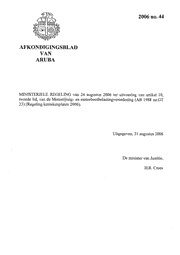
Afkondigingsblad van Aruba 2006 no. 44

Masters in Digital Marketing
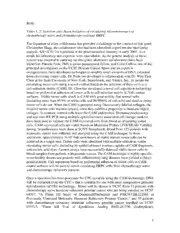
DTIC ADA453368: Gene Expression Analysis of Circulating Hormone Refractory Prostate Cancer
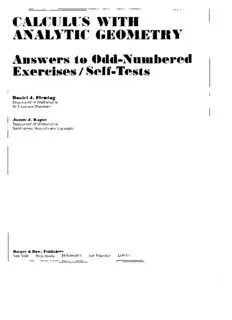
Calculus with analytic geometry
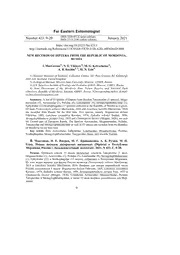
New records of Diptera from the Republic of Mordovia, Russia
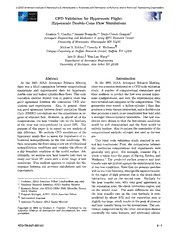
DTIC ADA455442: CFD Validation for Hypersonic Flight: Hypersonic Double-Cone Flow Simulations
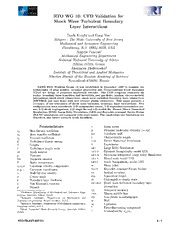
DTIC ADA455440: RTO WG 10: CFD Validation for Shock Wave Turbulent Boundary Layer Interactions
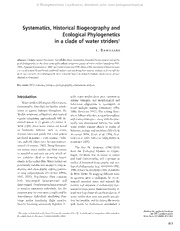
Systematics, Historical Biogeography and Ecological Phylogenetics in a clade of water striders

Interesting finds of Coleoptera from the SW Finnish Archipelago

Ca atalogu ue 48: P Portra aits
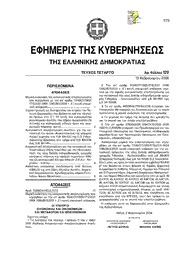
Greek Government Gazette: Part 4, 2006 no. 129
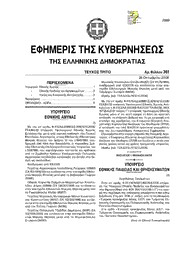
Greek Government Gazette: Part 3, 2006 no. 361
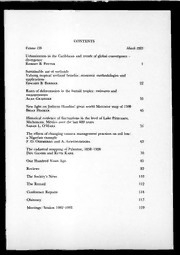
The Geographical Journal 1993: Vol 159 Table of Contents

